

|
General information and discussion about cultivating melons, cucumbers, squash, pumpkins and gourds.
|
 |
|
|
Thread Tools | Display Modes |
|
|
#1 |
|
Tomatovillian™
Join Date: Jul 2013
Location: SE PA
Posts: 972
|
This is the first year I have tried to grow butternut squash. The yard is not huge and with the dogs there is not really room for them to sprawl, so we never tried it. I read a little about trellising them this year, and decided I would try it. I used an unfinished duck boat scissor blind made from 1" EMT - round thin wall galv steel tubing. With a little bit of welding and drilling I finished up with a free standing X frame that is about 10 ft long and stands 7 feet high. The top is in tension, three spans of 550 cord. From this frame, I hung CRW wire. The result is two solidly supported vertical steel fences with 6"x6" openings with 3-4 ft separation between them. It can be easily diassembled and stored in the shed during the winter.
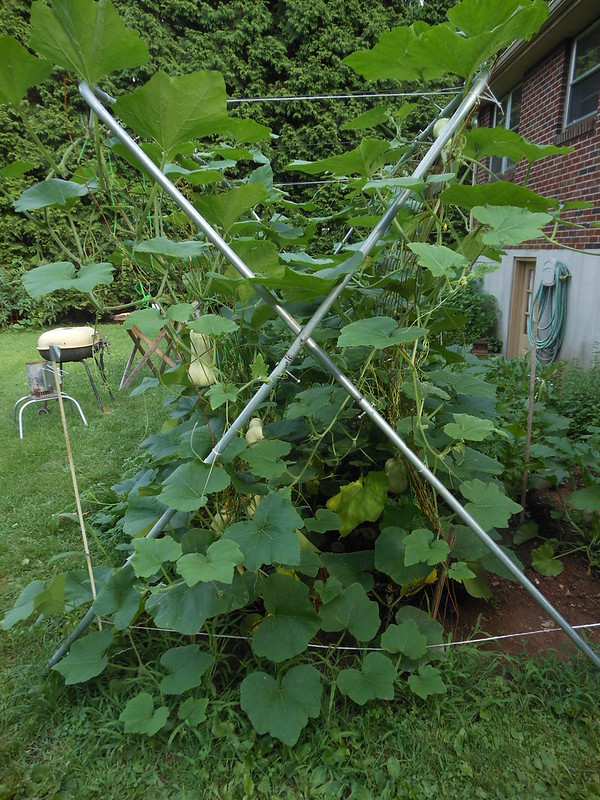 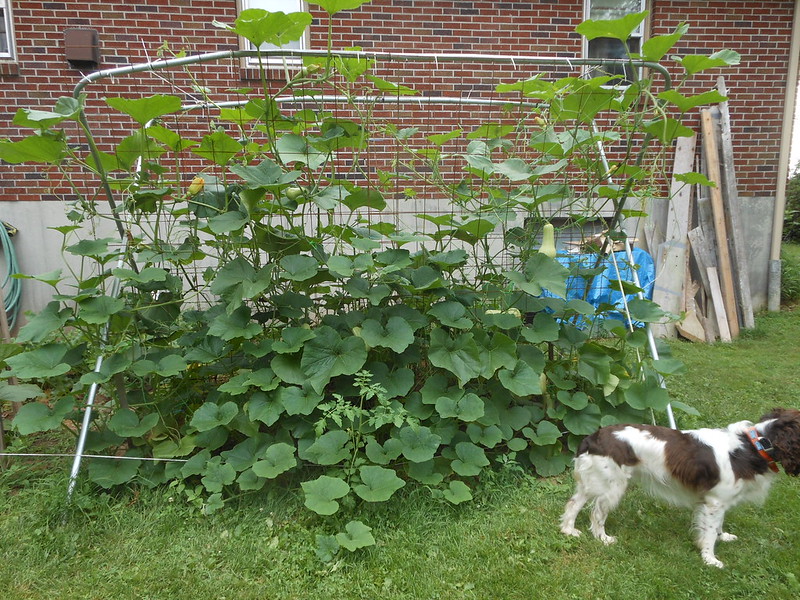 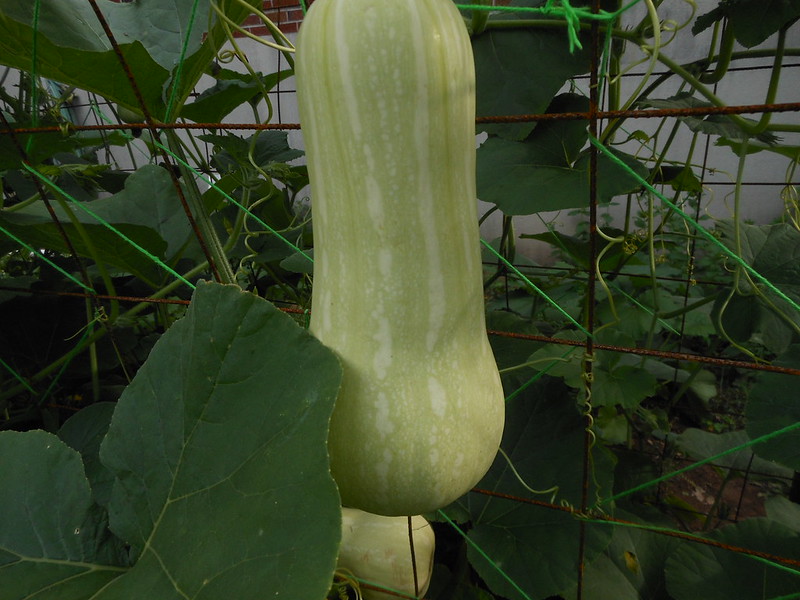 The seeds were saved from local garden butternuts I traded for last season. From pics on the internet I believe they are waltham butternut. We started them in a glass aquarium outside in April. 9/10 seeds germinated and we took care of them and they transplanted fine. The soil was lawn, rototilled, amended with some aged horse manure, and some vermicompost. I have done avct drench a couple times. Other than that I don't use fertilzer or sprays. Being the first year, I did not attempt to trim out anything. There are now quite a few "suckers/new vines" growing off the original vines. I tried a couple different yarn patterns to help them climb but they don't really climb themselves, and require active weaving or tying. I end up corkscrewing the tendrils on and they do hold if that is done in the correct twist direction. Of course, they will grab each other for a helping hand - or throat. I had to save one butternut from being choked out by another's vine. That left a big crease. All told it was has worked out really well. We transplated six butternuts, spaced 4 ft each way. One plant did not really grow a long main vine at first but the other five I was able to start weaving them on the trellis about the same time. I can't say for sure if that one has any butternuts growing yet. It is tough to follow the vines to know which plant is which. A couple days back I counted 22 butternuts that are growing/grown, but there is an increasing ratio of the yellow / rubbery females. They are yellow BEFORE the flower opens, so it does not seem like a pollination problem? What causes these yellow, rubbery fruits? Are these what is considered "aborted"? Is this a pollination problem or are the plants just saying "enough is enough"? The yellow ones die, often before even getting the flower open. They are not attached firmly. The green/striped "normal" ones that are hard shelled seem to do fine. The yellow ones started a few weeks back after a good number of normal squash were set. I have not taken perfect notes, so it is possible some of the larger yellow rubber ones were growing normally but missed pollination. Clearly though, many are yellow before flowers even open. color comparison, yellow is rubbery/rotten, 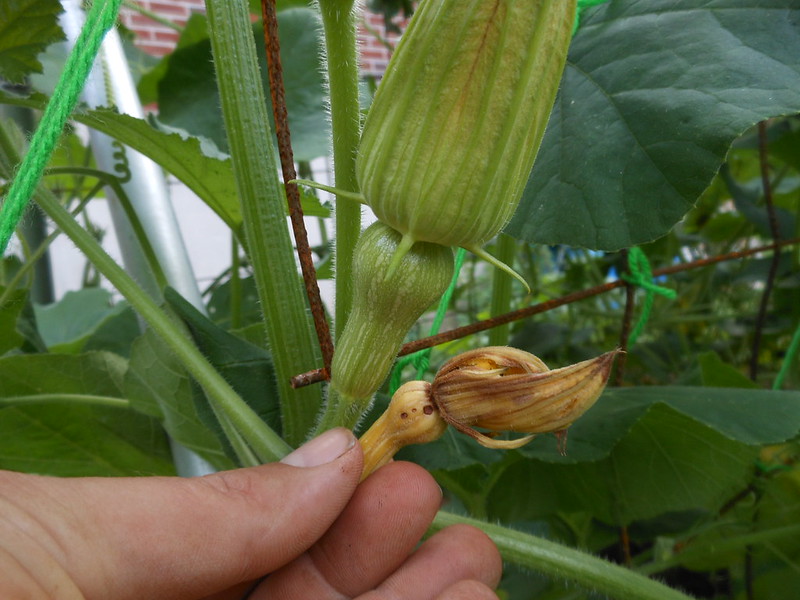 snaps off with little force 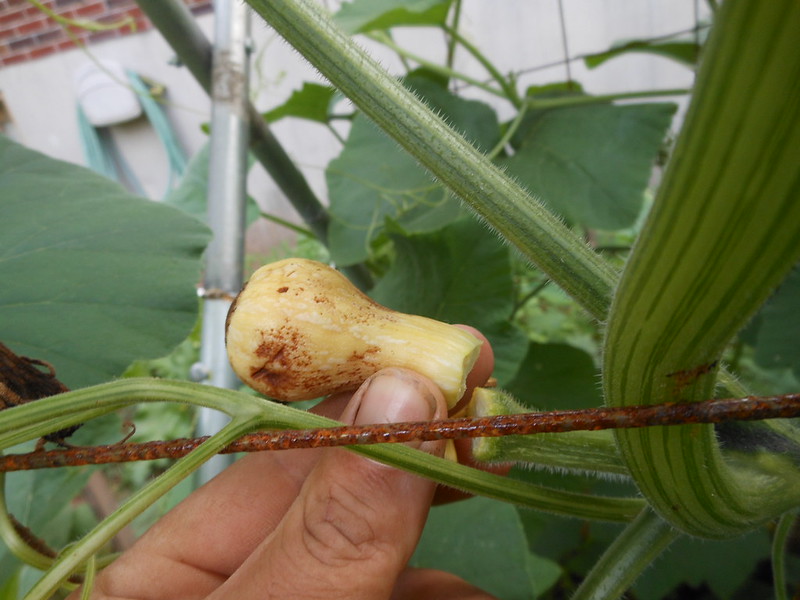 flower not open yet, already yellow 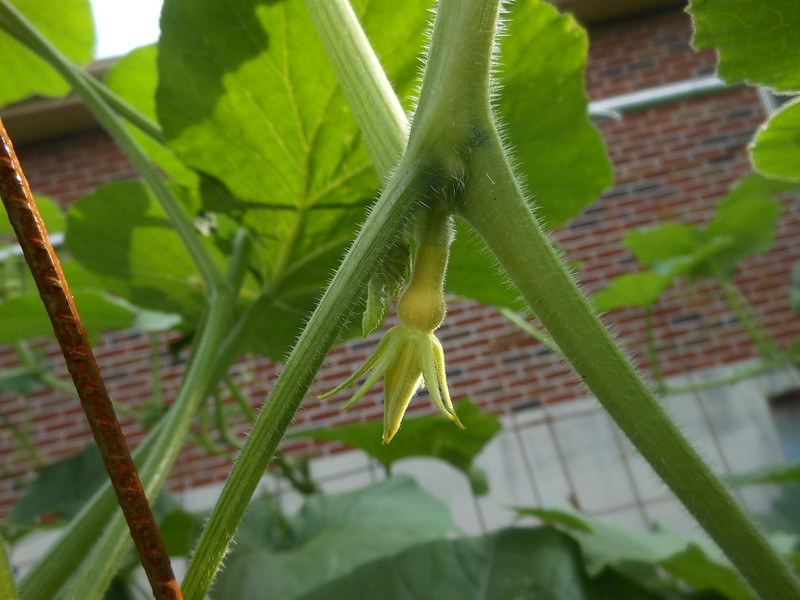 flower not open yet, yellow 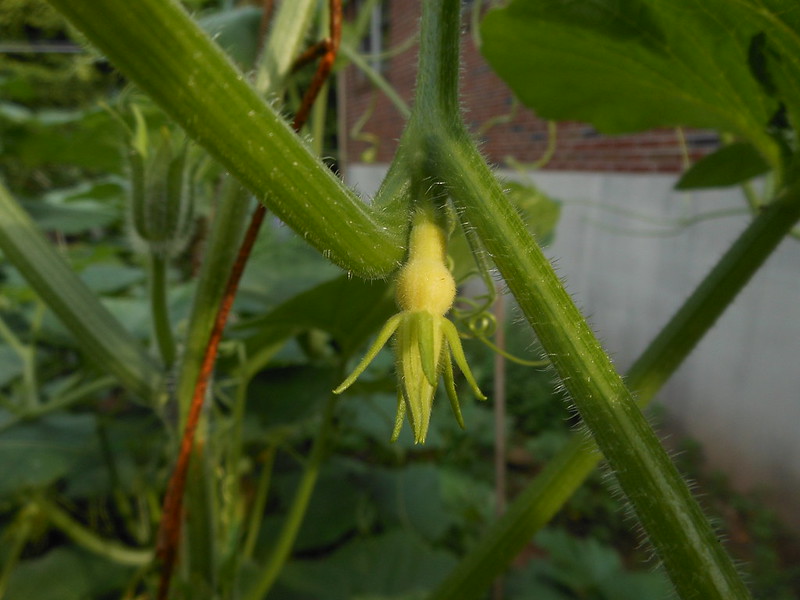 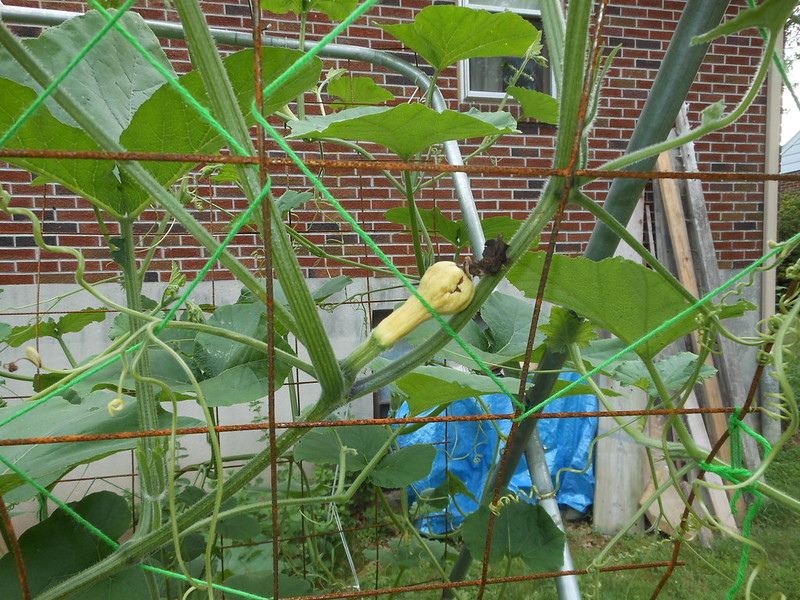 I am going to try hand pollinating the remaining normal ones that make it to flower, but other than that, I'm not sure what to do to maximize production. I will do an avct drench tomorrow. Maybe I should start trimming vines other than the mains? |
|
|

|
|
|
#2 |
|
Tomatovillian™
Join Date: Jan 2014
Location: Southern WI
Posts: 2,742
|
Is this a pollination problem or are the plants just saying "enough is enough"?This happens sometimes on cucurbits prior to flower opening. I think it is the plant saying enough is enough--or it could be something went wrong in the development of the tiny fruit and therefore nature takes care of itself. If these are growing normally prior to flower opening and then turning yellow and falling off--then pollination is your main issue. But given your post I think the prior is most likely. A squash plant, especially winter squash that is supporting other squash to maturity (e.g., not zukes or summer squash) will not accept every blossom. |
|
|

|
|
|
#3 |
|
Tomatovillian™
Join Date: Jul 2013
Location: SE PA
Posts: 972
|
Thanks for the response. According to a lot I have read in the past few days, it sounds like butternut plants usually produce a max of about 5 per plant. I guess we are near that typical max on most of the plants.
I went out this morning and checked bees and flowers and such. There were two bumblebees in one male, two honeybees in another male. There were two healthy female flowers open and one closed. I took a third male flower and handpollinated those three females just in case, and marked them with string. This afternoon, I checked one of the female flowers and two honeybees were in it, along with three striped cucumber beetles. I think they are probably getting pollinated well enough. One end of the trellis has three healthy females that haven't flowered yet. I will keep my eye on them. I am a total rookie to most gardening and particularly squash, but now that I understand a little about butternut growth, it seems to me it would better in my situation to put in more plants in the same area and keep them to a single vine. That would create more "direct piping" of the nutrients for the same space used, since the vines are basically a series circuit and each butternut grown is a voltage drop. |
|
|

|
|
|
#4 |
|
Moderator Emeritus
Join Date: Jan 2006
Location: Upstate NY, zone 4b/5a
Posts: 21,169
|
I don't think it's a pollination problem, so please also consider Blossom End Rot (BER)
Most folks consider that to be a problem with tomatoes, but peppers, eggplant,etc, can also suffer from BER and I thought I saw black ends on some of your small squash, http://www.gardeningknowhow.com/edib...-treatment.htm I agree with all that's said in the above link about BER except for the comment about spraying the foliage with Ca++. Studies about that are the same as what has been found with tomatoes, and that's that sometimes it works and more often it does not work. The key to preventing BER is knowing that tomatoes, squash, etc., are getting enough Ca++ from the soil and as the article notes, that also depends on the pH of the soil. And fact is there are many other variables that also play into BER> Hope that helps, Carolyn
__________________
Carolyn |
|
|

|
|
|
#5 |
|
Tomatovillian™
Join Date: Dec 2010
Location: Sunol, CA
Posts: 2,723
|
Also, those vines, nice as they are, can only feed so many squash. The ones that are growing pull resources preferentially, to the point of starving some of the smaller ones.
This is a fact of life in our healthy squash fields. And once we cut the big ones, we get a new batch of squash to "take". Squash abortion is often simply a matter of too many squash for the plant to support. |
|
|

|
|
|
#6 |
|
Tomatovillian™
Join Date: Jul 2013
Location: SE PA
Posts: 972
|
I have been making a good study of the butternut trellis and I have concluded it is likely the lack of nutrients at the far end of the vines causing those yellow babies. They seem to occur soon after a big healthy butternut. Next year I will probably plant more densely and trim suckers after one leaf.
Pollination seems okay; every morning I check there is probably an average of about 1 bee per bloom. I did hand pollinate three flowers one morning, and another yesterday morning just to make sure. By afternoon, there was a honeybee in that last one, so it was likely unnecessary. I tied a bow on them as marker and they are all looking good, not yellowing. I have taken to just knocking off the yellow ones when I see them. Some are as small as 1/4" when I first see them - the yellow pops in the morning light. But there are still a lot of good ones coming on. I put green twisters next to the green babies as a marker; that way I can check if they start normal and then yellow. So far, none have done that. And yes, I am an idiot, the green twisters are hard to see but for some reason I felt the need to LITERALLY color code them. Last week there were two yellow ones that got to about 2", but again they never properly flowered. I had let them on to see what happened. One of those may be the one that looks like BER. I don't have much experience with BER with tomatoes, thankfully. Judging by the description in that article posted by Carolyn, I don't think this is BER. Fred, I'm glad you mentioned harvesting. I have not thought much about that and should read into it. What tells should I look for to know when to pick them? It seems early to me since the ones I traded for last year were on a garden rack in November. We ate the last ones in February and those last few had gone from great to amazing and tasted very nutty. |
|
|

|
|
|
#7 |
|
Tomatovillian™
Join Date: Dec 2010
Location: Sunol, CA
Posts: 2,723
|
You are right to be cautious about harvesting too early.
Typically you want a butternut to be tan, with little green if any on the surface when you harvest. Probably more importantly, you want it to be hard and matte with no glossy look or feel on any part of the fruit. It is usually the stem-side of the fruit that stays glossy longest. One other sign to look for is that you want the stem to be hard, and starting to discolor from green. If the stem is soft and vegetative-green, the fruit is probably not ready. I harvested butternut in my field today, both to sell the squash and to stimulate production of new flowers and fruit. After harvesting, it is often surprising how fast the vines go from looking tired to rejuvenated. |
|
|

|
|
|
#8 | |
|
Moderator Emeritus
Join Date: Jan 2006
Location: Upstate NY, zone 4b/5a
Posts: 21,169
|
Quote:
https://www.google.com/?gws_rd=ssl#q...h+cuke+beetles What many of us do is to cover the young plants with row cover as soon as plants are put out and then when the blossoms appear take off the row cover so pollination can occur and doing that allows for more time for maturation of the squash, or cukes as well, before the plants go down with the wilts. Also, I never trim squash or cuke plants since the stems are hollow and that leaves an open wound that is not good IMO.  Carolyn
__________________
Carolyn |
|
|
|

|
|
|
#9 |
|
Tomatovillian™
Join Date: Jul 2013
Location: SE PA
Posts: 972
|
Striped cucumber beetles, colorado potato beetles, and japanese beetles are most of what I've seen in that patch, pest wise. Stink bugs on the butternut also, and flea beetles on the eggplant. I never ask any of them if they are pollinating, I just do my best to knock them into a cup of alcohol/soap/water. Those striped cucumber beetles are actually hardest of them all to grab.
Interesting about the trimming. That is what I would think as well since the vines are hollow, but I have read it a few times on various websites to trim side shoots. |
|
|

|
|
|
#10 |
|
Tomatovillian™
Join Date: Jul 2013
Location: SE PA
Posts: 972
|
Thanks for all the help everyone. I think I learned a bit about growing butternuts. Everything went perfectly and I'll likely do it exactly the same next year. I harvested them before the freeze last weekend. Twenty four fully mature, totaling 72 lb, and six more that were still green from the last month or so. We ate one of the mature ones the other day; it tasted wonderful and there was nothing left but the blossom end and stem.
|
|
|

|
|
|
#11 |
|
Tomatovillian™
Join Date: Aug 2015
Location: Zone 6a Denver North Metro
Posts: 1,910
|
Nice trellising work and good growing, nearly 20lbs a plant. I'm adding trellis space this winter and will try either the butternut or spaghetti next season for the first time.
|
|
|

|
|
|
#12 |
|
Tomatovillian™
Join Date: Jul 2013
Location: SE PA
Posts: 972
|
Thanks; I thought it worked pretty cool to finally make use of that boat blind we had started but never finished. It was six plants altogether but the one in the back center never really developed a strong vine to start and had three small vines out of it. That plant only had one butternut on it, so the other five pulled the weight.
|
|
|

|
|
|
#13 |
|
Tomatovillian™
Join Date: Jan 2014
Location: Southern WI
Posts: 2,742
|
Very nice yield! Enjoy those squash!
|
|
|

|
 |
|
|
